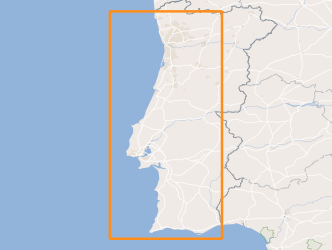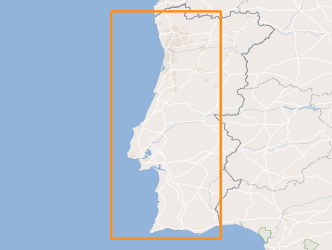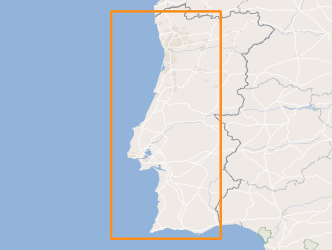Topic
biota
40 record(s)
Type of resources
Available actions
Topics
INSPIRE themes
Keywords
Provided by
Years
Formats
Representation types
Update frequencies
Status
Scale
geoDescCode
cartografia
geographicCoverage
geographicCoverageDesc
inspirecore
hvd
referenceDateRange
denominatorRange
resolutionRange
dataPolicy
openServiceType
dataType
dataFormat
-

Delimitation and classification of coastal and estuarine-lagoon areas of molluscs and bivalve production located in the mainland published by Diário da República (the Portuguese Official Gazette) Nº. 45/2017, 2nd series of 2017-03-03, Order Nº. 1851/2017. To check the status of classification and / or the most current bans associated with the areas it is recommended to consult the IPMA page dedicated to the matter from 'http://www.ipma.pt/en/pescas/bivalves'.
-

Delimitation of portuguese coastal shellfish waters, according to the Law nº 236/98 and the European Directive 2006/113/EC concerning the protection of the aquactic environment and improvement of water quality in order to support shellfish (bivalve and gasteropod molluscs) life and growth and thus to contribute to the high quality of shellfish products directly edible by man, as well as the evaluation of the quality of coastal shellfish waters - Conformity according to Directive 113/2006 / EC, excluding the metals silver (Ag) and Arsenic (As), and fecal coliforms.
-

Delimitation and classification of coastal and estuarine-lagoon areas of molluscs and bivalve production located in the mainland published by Diário da República (the Portuguese Official Gazette) Nº. 78/2015, 2nd series of 2015-04-22, Order Nº. 4022/2015 including the additions published by Diário da República Nº. 188/2016, 2nd series of 2016-09-29, Order Nº. 11610/2016. See also rectification statement no. 1077/2016 (in rectification of order no. 11610/2016) published by Diário da República, 2nd series, no. 211 of November 3, 2016. To check the status of classification and / or the most current bans associated with the areas it is recommended to consult the IPMA page dedicated to the matter from 'http://www.ipma.pt/en/pescas/bivalves'.
-

Delimitation and classification of coastal and estuarine-lagoon areas of molluscs and bivalve production located in the mainland published by Diário da República (the Portuguese Official Gazette) Nº. 78/2015, 2nd series of 2015-04-22, Order Nº. 4022/2015. To check the status of classification and / or the most current bans associated with the areas it is recommended to consult the IPMA page dedicated to the matter from 'http://www.ipma.pt/en/pescas/bivalves'.
-

Delimitation of coastal, lagoon and estuary areas of molluscs and bivalve production located in the mainland published by Diário da República (the Portuguese Official Gazette) Nº. 41/2014, 2nd series of 2014-02-27, Order Nº. 3244/2014.
-
Informação resultante do tratamento dos dados fornecidos pelas pessoas e entidades que exercem atividades de anilhagem e recaptura de aves em Portugal. Inclui 2 camadas: - pontos da anilhagem ou recaptura das aves - distância linear, euclideana, entre recapturas
-
Informação associada à salvaguarda e monitorização da população de Roazes do estuário do Sado. Inclui 2 camadas: - área de intervenção do Plano de Acão para a Salvaguarda e Monitorização da População Residente de Roazes do Estuário do Sado; esta área poderá ser alterada, em função dos resultados obtidos com o programa de monitorização; - pontos e dados de observação da espécie (Tursiops truncatus) no âmbito do Plano de Acão para a Salvaguarda e Monitorização da População Residente de Roazes do Estuário do Sado.
-
Informação sobre a distribuição e quantitativos de aves aquáticas, incluindo as limícolas, anatídeos e outras, de modo a conhecer o ciclo anual das populações, as flutuações e tendências dos seus efetivos, bem como a importância das diversas zonas húmidas para cada espécie. Os censos de aves aquáticas em Portugal estão integrados no projeto “International Waterbird Census”, coordenado desde 1967 pela Wetlands International, e efetuam-se anualmente desde 1976, tendo sido publicados relatórios anuais entre 1988 e 1996. Atualmente, em Portugal, as contagens são realizadas no âmbito do Programa Nacional de Monitorização de Aves Aquáticas Invernantes, coordenado pelo ICNF e realizadas regularmente nas zonas húmidas mais importantes para estas espécies, em particular estuários, pauis, açudes e albufeiras. Este programa inclui ainda contagens de Anseriformes e Gruiformes no período entre outubro e março de cada ano.
-
Georreferenciação das ocorrências relacionadas com a Fauna, registadas através da linha SOS AMBIENTE.
-
A RNET foi criada através do Decreto-Lei n.º 565/76, de 19 de Julho, tendo como objectivos a manutenção das funções naturais numa zona representativa do ecossistema estuarino e a protecção do elevado número de aves migradoras que acorrem a este estuário sobretudo no Outono/Inverno e no período de passagens migratórias.
